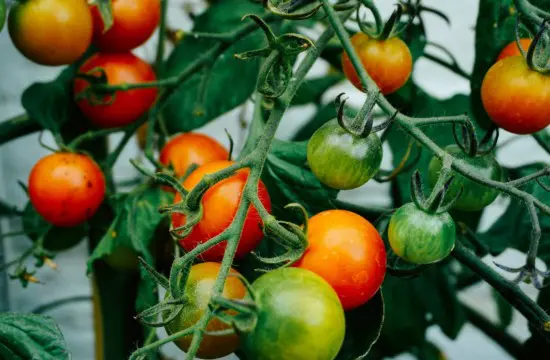The sustainable farming definition has to do with a lot more than just crops. It is the act of sustainable agriculture. It utilizes ecological cycles in a way that is sensitive to the environment and the plant life within it. Sustainable farming practices promote environmentally friendly methods that protect the land and support the ecosystem – not to mention a lifestyle and a path to feeding the world.
Farmers who commit to sustainable farming practices focus on doing what is best for the natural systems within the environment. They do this by building a healthy soil system, managing water efficiently, minimizing the amount of air and water pollution they produce, and being conscious of their carbon footprint.
By finding innovative ways to efficiently use non-renewable resources and recycle their products, those who engage in sustainable farming methods produce plants, food, and animal products, beneficial for public health. In addition to producing healthy products, farms are also able to maintain profit margins and support their local economies.
Why Are Sustainable Farming Practices so Important?
Sustainable farming actively supports and protects the environment while providing resources. When farmers are committed to protecting the natural systems and resources that they rely on, they can produce healthy products that have a minimal environmental impact.
Furthermore, the switch to sustainable farming methods and sustainable agriculture remains profitable. In fact, sustainable practices allow farms to maintain profitability and support their local economies. Some of the practices that farmers rely on include:
- Building a healthy soil system.
- Taking steps to prevent erosion.
- Profitability.
- Integrating a water management system.
- Remaining conscious of carbon emission.
- Increasing resilience to disease, insects, and extreme weather.
- Embracing biodiversity and rotating crops.
Benefits of Sustainable Farming
Farms must be successful and profitable if they are to continue to thrive, so a sustainable farm means a productive farm, which is a benefit to the farmer and his/her family.
In addition, the benefits of sustainable farming also translate to healthier products and safe foods. Sustainable agriculture field practices, in conjunction with accepted industry and land grant ag universities’ best practices, can work together to reduce pesticide use and concerns with misapplications which can be harmful.
Benefits of sustainable farming practices include:
- Reducing the agricultural runoff that becomes absorbed into the ground.
- Avoiding water pollution of lakes, ponds, rivers, and other water sources.
- More efficient use of water.
- Promoting soil fertility by recycling nutrients.
- Utilizing geologic and biologic carbon sequestration to reduce carbon emissions.
- Saving energy by using efficient farm operations.
- Better monitoring and decreased emissions of air pollutants and greenhouse gasses.
- Enhancing the natural habitats for pollinators and beneficial insects.
- Promoting the coexistence of natural wildlife while also protecting the welfare of livestock.
Maximize Your Inputs with AVAIL® T5
Find products to maximize your nutrient use efficiency. From getting the most from your phosphorus to enriching your plants with micronutrients, we have naturally derived solutions to boost your crop yield. Find the perfect solution for you!
Sustainable Farming Methods and Practices
There are many different types of sustainable farming practices that range from increasing biodiversity to using quality fertilizer enhancers. Below are some of the top ways in which people can practice sustainable farming.
Treat Farms as a Living Entity with Biodynamic Farming
Biodynamic farming refers to the way in which farmers can recycle their products and create their own sustainable ‘organisms’. By using recycling and finding ways to reduce their waste, farmers can support sustainable practices. One common way in which farmers can promote biodynamics is by using animal waste to replenish their soil and promote plant growth, which is an area in which many livestock farmers have been ahead of the curve for decades.
Grow Plants With Hydroponics and Aquaponics
In some areas, farmers can use the innovative technique of growing plants without the use of soil. Hydroponics and aquaponics systems use alternative sources to grow plants. While hydroponic systems grow plants directly into mineral solutions, aquaponics is a practice of raising aquatic animals to grow crops indirectly into water.
Instead of using fertilizer and soils, the plants are supported through nutrients that are added to the water. Sometimes, farmers even use live fish to provide plants with the necessary nutrients. This innovative system can work on both smaller and commercial scales.
Adding Fertilizer Enhancer to Increase Nutrient Absorption
One of the best ways to promote plant performance, soil health, and water quality is to use fertilizer enhancers. Not only does the fertilizer enhancer balance nutrient uptake, but it also boosts plant metabolism, increases the available nutrients, supplements growth with phosphates, and shields plants from yield loss.
Promote the Use of Urban Agriculture
As the population of the world continues to increase steadily, it is projected that humans will continue to live in urban areas and may seek personal options around urban agriculture. This refers to the creation of growing techniques within cities and urban areas. For instance, populated areas can plant community gardens, build rooftop farms, create greenhouses, and support backyard farms. While these efforts are applauded and should be encouraged, it should be noted that for the long-term future, the vast majority of bushels, tons, truckloads, or cargos of feed, food, fuel, and fiber will come from production agriculture farms rather than rooftop farms or community gardens.
Enhance Profits with Agroforestry and Food Forests
Trees and shrubs can help create long-lasting and diverse land for farmers. Agroforestry refers to the process of creating a microclimate that can support soil humidity and favorable temperatures that also protects crops from extreme weather.
Not only does agroforestry help with the protection of crops, but food forests can provide an extra source of income for farmers. This sustainable farming practice can be supplemented by planting fruit-bearing trees and nut-bearing trees that create a more diverse ecosystem.
Increase Biodiversity with Polycultures and Crop Rotation
By planting multiple types of crop species in one area, the plants can support each other and produce more resilient plants. High biodiversity is important to supporting plants through extreme weather and improving soil fertility. In addition, crop rotation is equally important to promoting soil fertility because the diverse plants use natural mechanisms to preserve the soil.
Increasing biodiversity and better utilization of fertilizers, fertilizer managers, and pesticides can be achieved through the adoption of the 4Rs Principles of Nutrient Stewardship.
How to Make the Switch To Sustainable Farming Practices
Making the switch to utilizing sustainable farming methods does not need to be difficult, but it is not as easy as just flipping a switch either. In fact, it can be a major mind-shift for a proud and profitable, conventional farmer. Constant and intense field monitoring and timing are crucial to being successful. An open, exploring and innovative attitude is also brutally key to success. The good news is there are experts available to assist farmers and growers in their transition to sustainable farming or if they just have questions. To make the switch and start protecting the environment, connect with a specialist at Verdesian today.


